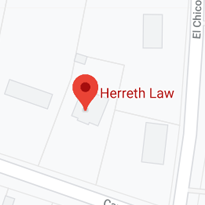Fall injuries are the leading cause of ER visits in Tarrant County. Nationwide, some eight million fall victims are rushed to hospital emergency rooms every year. Many of these falls occur inside grocery stores, or in grocery store parking lots.
Generally, grocery store owners are legally responsible for these fall injuries. Victim/plaintiffs must establish negligence by a preponderance of the evidence (more likely than not).
Due to the serious nature of fall injuries, a Fort Worth personal injury attorney can often obtain substantial compensation in these cases. That compensation usually includes money for economic losses, such as medical bills, and noneconomic losses, such as pain and suffering.
Property Owner Responsibility
To determine the level of responsibility, Texas law uses a classification system based on common law. This system divides victims into three categories:
-
Invitees: Most shoppers are invitees, even if they do not spend any money and even if they do not plan to spend money. These individuals have indirect permission to be on the land and their presence benefits the owner. Therefore, the property owner has a duty of reasonable care. That’s one of the highest duties in Texas law.
-
Licensee: These individuals have permission to be on the land, but there is no benefit. Girl Scouts selling cookies in the parking lot are usually licensees. Since there is no benefit, owners usually only have a duty to warn invitees about latent (hidden) defects.
-
Trespassers: If the victim had no permission and there was no benefit, the owner had no duty. Grocery store trespassers include people like fugitives running from police officers.
In this context, the duty of reasonable care includes a responsibility to make the premises safe and also a responsibility to perform safety inspections.
Establishing Knowledge
Owners are only responsible for hazards they know about. Victim/plaintiffs can use direct or circumstantial evidence to establish actual or constructive knowledge (should have known). Either form of knowledge will do.
Direct evidence, which Weatherford personal injury attorneys usually uncover during discovery, includes things like restroom cleaning reports, “cleanup on aisle five” announcements, and reports of potholes or other hazards in the parking lot.
To evaluate circumstantial evidence, most judges use the time-notice rule. Think of a banana peel on the floor. If the peel was yellow, it probably just fell, so there is no constructive knowledge. But if the peel was black, it had probably been on the floor for some time, and someone should have picked it up.
Some Insurance Company Defenses
Establishing duty and knowledge is not enough. Attorneys should also be ready for some insurance company defenses, such as:
-
No Causation: The Texas Supreme Court recently limited the res ipsa loquitur (the thing speaks for itself) rule. As a result, the victim/plaintiff might need to produce a witness which saw the victim fall. Video evidence will do as well.
-
Open and Obvious Hazard: These obstructions include aisle displays and colored liquid. However, not everyone’s vision is the same, so not everyone can see and avoid an “open and obvious” hazard.
-
Assumption of the Risk: If victims voluntarily assume a known risk, they are legally responsible for their own injuries. Warning signs make this defense easier to prove, but they do not conclusively establish it.
The insurance company usually has the burden of proof to establish these defenses in court and convince jurors they apply.
Fall victims might be entitled to substantial compensation. For a free consultation with an experienced personal injury attorney in Fort Worth, contact Herreth Law. Home and hospital visits are available.

